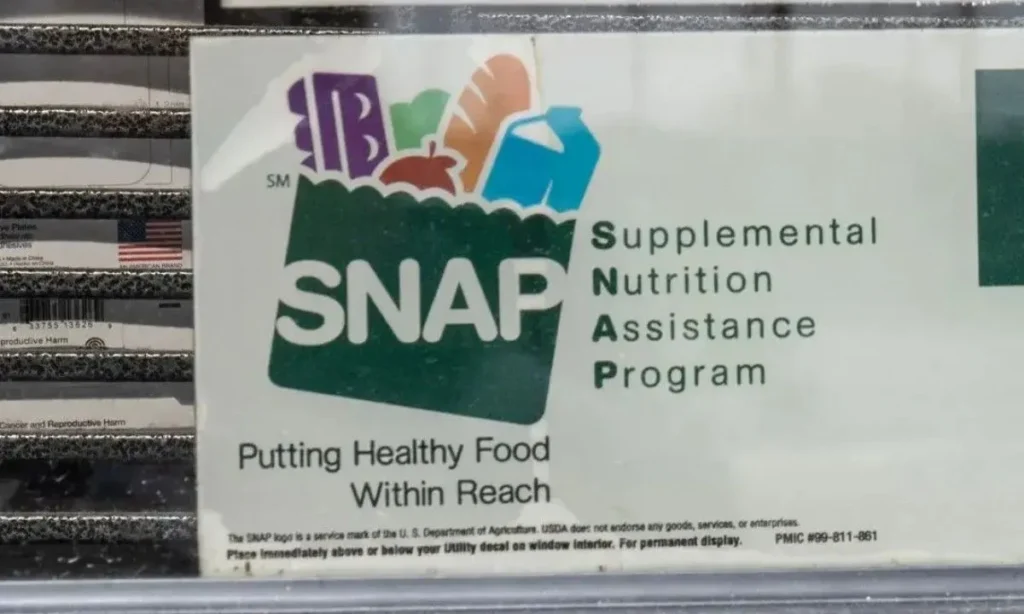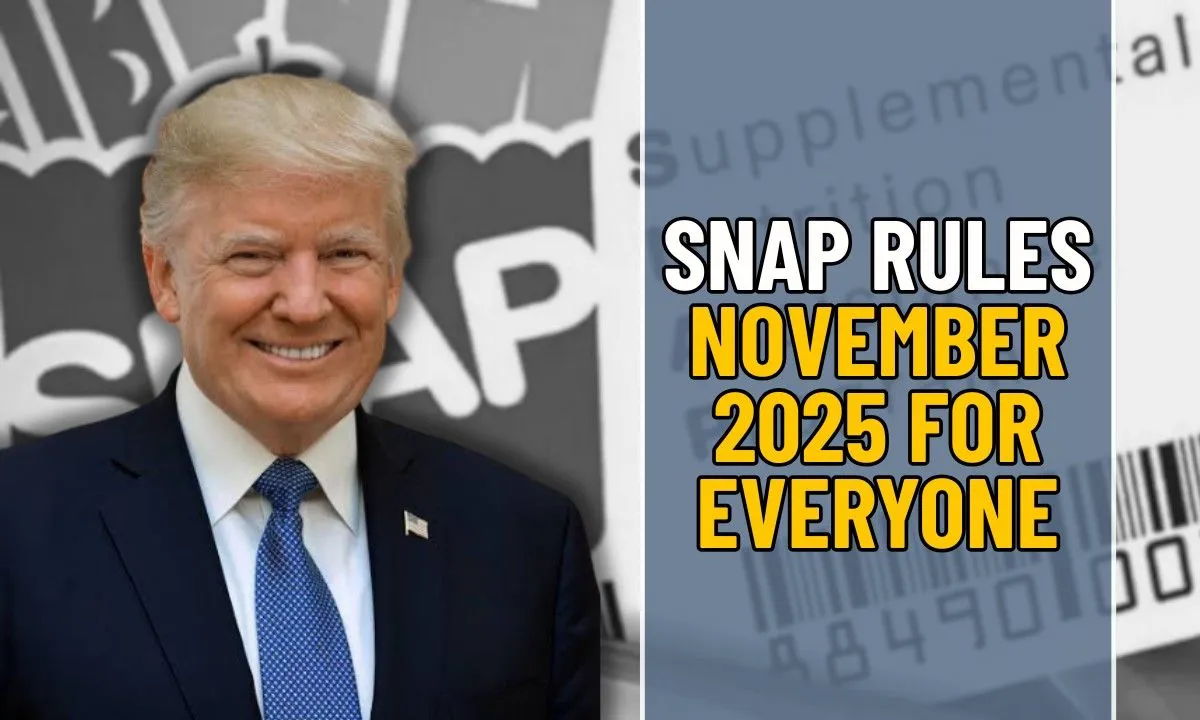Beginning November 2025, the Supplemental Nutrition Assistance Program (SNAP), the nation’s most crucial food aid initiative has been updated with new rules designed to help more families keep up with the rising cost of living. Managed by the U.S. Department of Agriculture’s Food and Nutrition Service (FNS), this federal program provides monthly financial help to millions of low-income Americans through Electronic Benefit Transfer (EBT) cards, which function like regular debit cards at authorized grocery stores, supermarkets, and local farmers markets across the country.
The updated guidelines are meant to make SNAP more inclusive, transparent, and user-friendly. With inflation still affecting grocery prices and basic household costs, these updates ensure that no family goes hungry simply because of complex paperwork or outdated income thresholds. The 2025 changes focus on increasing accessibility, expanding digital processing, and improving benefit reliability.
How the Updated SNAP Benefits Work in November 2025
The amount a household receives in SNAP benefits depends primarily on its income level and family size. Each year, the USDA sets the maximum benefit for every household category. After determining a family’s total income, the system subtracts 30% of their net monthly income to calculate the final benefit amount. This formula ensures fairness families with lower earnings receive higher assistance, while those with moderate incomes receive proportional support to meet their needs.
To better understand the program’s structure, here’s a simple overview of the updated details for 2025:
| Particulars | Details |
|---|---|
| Program Name | Supplemental Nutrition Assistance Program (SNAP) |
| Managed By | U.S. Department of Agriculture (USDA), Food and Nutrition Service (FNS) |
| Type of Benefit | Monthly food and grocery assistance |
| Payment Method | Electronic Benefit Transfer (EBT) Card |
| Effective From | November 2025 |
| Official Website | https://www.fns.usda.gov/ |
Who Can Qualify for SNAP in 2025

The SNAP eligibility criteria have been adjusted for 2025 to make the process more balanced and fair for struggling households. Eligibility now depends on three key factors income, resources, and residency.
Families must meet income limits that do not exceed 130% of the federal poverty level for gross income and 100% of the poverty level for net income after deductions such as rent, childcare, or medical expenses. Asset limits also apply, though families that include seniors aged 60 or above or individuals with disabilities are exempt from these restrictions. Applicants must also live in the state where they apply and provide proper identification to prove citizenship or legal residency.
Each U.S. state manages SNAP independently, meaning specific rules and payment dates can vary slightly. Those unsure about their local eligibility or payment schedules can refer to the FNS State SNAP Directory for accurate and state-specific information.
Major SNAP Changes You’ll Notice from November 2025
One of the biggest improvements to the SNAP program this year is how it handles income adjustments and accessibility. The new rules take into account rising inflation and cost-of-living changes to ensure that families are not excluded just because of minor income increases.
Another significant change is the introduction of digital accessibility. Most states now allow families to apply, renew, or upload documents online, making it easier to stay compliant and avoid paperwork delays. In addition, the USDA has strengthened its fraud protection systems, using advanced data monitoring and verification tools to prevent unauthorized use and ensure benefits reach the right people.
States have also introduced automated benefit deposit schedules to minimize technical issues and late payments. This update ensures families can plan their grocery shopping more reliably each month without worrying about delays or missing funds.
Helpful Tips for SNAP Recipients
While the program is federally funded, each state handles its administration differently. That means your payment dates, benefit amounts, and renewal deadlines can differ depending on where you live. Here are a few essential reminders to help you make the most of your benefits:
- Stay Updated: Always check your state’s official SNAP website or mobile app for real-time updates on payments, eligibility changes, or policy announcements.
- Report Any Changes Quickly: If your income, address, or household size changes, report it immediately to your local SNAP office to avoid any interruption in benefits.
- Submit All Documents on Time: Upload any requested documents like proof of income or identity promptly through your state’s online portal to ensure continued eligibility.
- Track Your Benefits: Use your EBT mobile app or online account to keep an eye on your balance, transactions, and upcoming payment schedule.
Why the 2025 SNAP Updates Matter
The November 2025 SNAP update represents a vital step forward in fighting hunger and supporting working families during tough economic times. As grocery and utility prices continue to rise, these rule changes help ensure that the nation’s most vulnerable individuals seniors, single parents, and low-income workers receive timely, fair, and sufficient support.
By raising income limits, simplifying online access, and strengthening payment security, the USDA aims to make SNAP not just a financial aid system but a tool for long-term food stability. These updates also highlight the government’s continued focus on digital inclusion, making it easier for families in both urban and rural areas to access benefits without unnecessary travel or paperwork.
The November 2025 SNAP update is more than just a rule change, it’s a lifeline for millions of Americans facing ongoing financial hardship. With better income flexibility, improved digital services, and stronger protections, SNAP continues to serve as the country’s most essential safety net against hunger. If you’re eligible, apply early and stay informed through the official SNAP page to ensure uninterrupted food support for your household.
FAQs
Q1. When do the new SNAP rules take effect?
The latest eligibility and benefit changes come into effect from November 2025 across all states.
Q2. Who manages the SNAP program?
SNAP is operated by the U.S. Department of Agriculture’s Food and Nutrition Service (FNS), which oversees all federal food assistance programs.
Q3. How can I check my state’s SNAP payment dates?
Each state has its own schedule. Visit the FNS State Directory to find your local payment calendar and contact information.
Q4. Can seniors or people with disabilities get SNAP even with higher resources?
Yes. Households including seniors or individuals with disabilities are often exempt from strict resource limits and may qualify under relaxed financial rules.
Q5. Where can I apply for SNAP online?
Most states now accept applications through their official websites. You can also find direct links on the FNS official portal.



